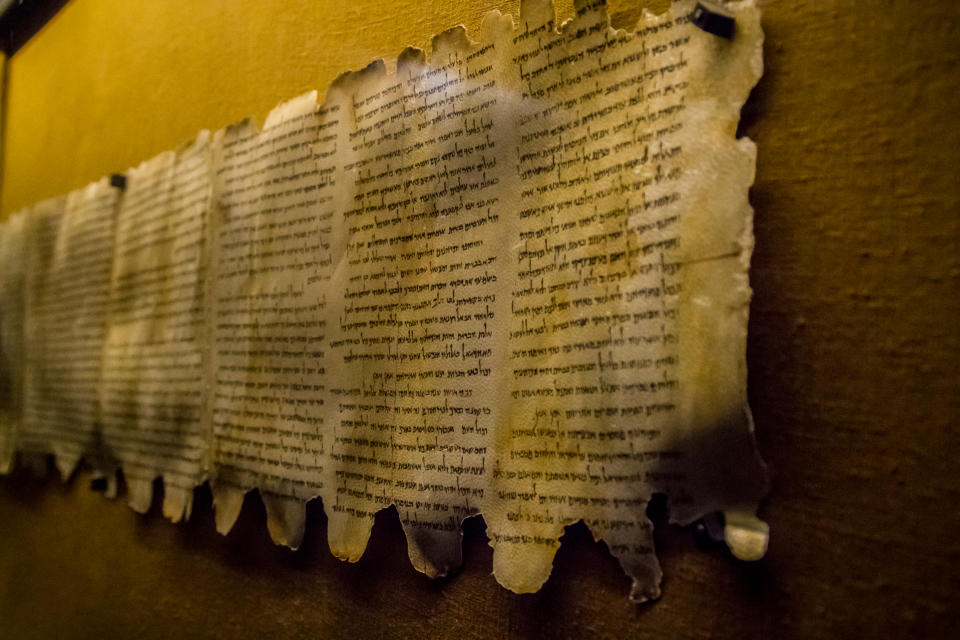Hidden text found in Dead Sea Scroll fragments in British library

New research has revealed hidden text in fragments of the famous Dead Sea Scrolls, unearthed in the Judaean Desert over 60 years ago.
The fragments kept in University of Manchester’s John Rylands Library were previously thought to be blank.
But an investigation by Professor Joan Taylor of King’s College London used multispectral imaging to reveal hidden text in Hebrew and Aramaic including the word “Shabbat” (Sabbath).
The famous scrolls were uncovered near the Dead Sea between 1946 and 1956.
Read more: Nasa imaging technology reveals ‘hidden script’ in Dead Sea Scrolls
They contained versions of many Biblical texts, including books that were not canonised in the Hebrew Bible, such as “Jubilees”.
The scrolls consist of tens of thousands of fragments of parchment and papyrus that are thought to belong to up to 1,000 different manuscripts.

Unlike recent cases of forgeries assumed to be Dead Sea Scroll fragments, all these small pieces were unearthed in the official excavations of the Qumran caves.
In the 1950s, the fragments were gifted by the Jordanian government to Ronald Reed, leather expert at the University of Leeds, so he could study their physical and chemical composition.
It was assumed that the pieces were ideal for scientific tests, as they were blank and relatively worthless.
Read more: American museum’s Dead Sea Scrolls fragments turn out to be fakes
When examining the fragments for the new study, Taylor thought it possible that one of them did actually contain a letter, and therefore decided to photograph all of the existing fragments using multispectral imaging.
It was established that four fragments have readable Hebrew/Aramaic text written in carbon-based ink.
The most substantial fragment has the remains of four lines of text with 15-16 letters, most of which are only partially preserved, but the word “Shabbat” can be clearly read.
“Looking at one of the fragments with a magnifying glass, I thought I saw a small, faded letter – a lamed, the Hebrew letter ‘L’,” said Taylor.
“Frankly, since all these fragments were supposed to be blank and had even been cut into for leather studies, I also thought I might be imagining things. But then it seemed maybe other fragments could have very faded letters too.
“With new techniques for revealing ancient texts now available, I felt we had to know if these letters could be exposed. There are only a few on each fragment, but they are like missing pieces of a jigsaw puzzle you find under a sofa.”


